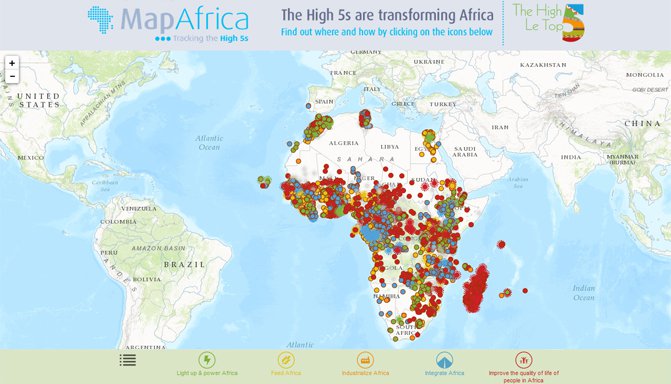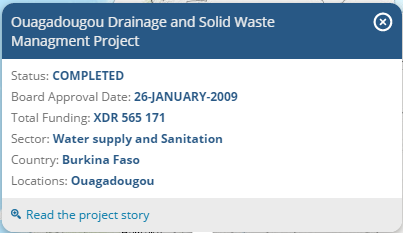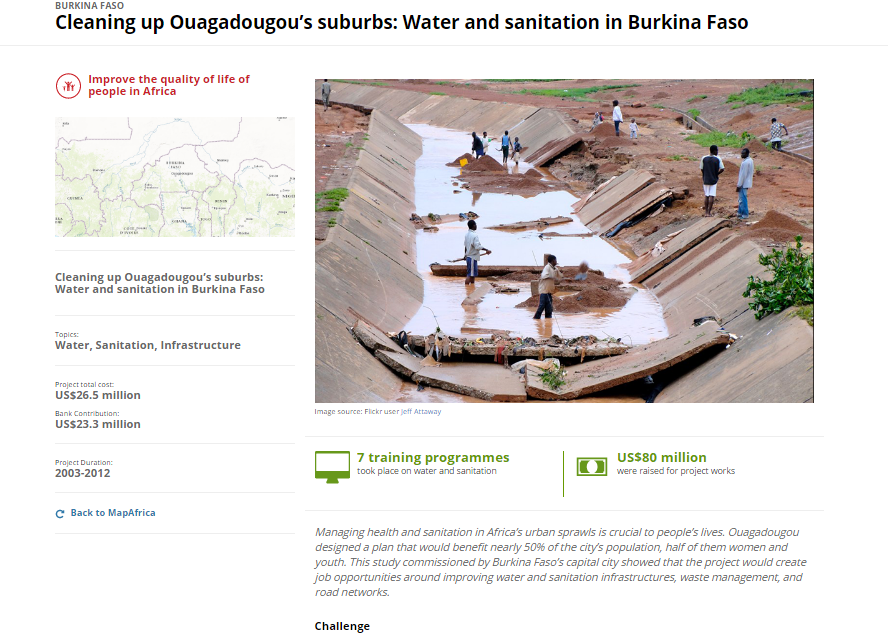60 second interview on MapAfrica 2.0
We spoke to Samuel Blazyk and Horia Sohir Debbiche about the African Development Bank’s (AfDB) online portal MapAfrica 2.0.
What is MapAfrica 2.0?
MapAfrica 2.0 is a new version of an interactive online tool that allows anyone in the world to see data on how AfDB’s projects are boosting Africa’s economies and improving lives.

What information is available on MapAfrica 2.0?
Users can see where the bank is making an impact on the continent and how 800 of its projects relate to its High 5 development priorities: Light up and power Africa; Feed Africa; Industrialise Africa; Integrate Africa and Improve the quality of life for the African people.
How is IATI involved?
The information shared on MapAfrica 2.0 is taken from IATI data reported monthly by AfDB, reflecting its commitment to openness and transparency.
What’s different in the new version?
With one click you can see an overview of AfDB’s High 5 priorities. The new version also includes stories with detailed accounts of some completed projects, information on beneficiaries, the approach taken, main results and lessons learned.
Developed in collaboration with Development Gateway, version 2.0 also helps us avoid duplication around data re-entry, as data on MapAfrica is automatically refreshed with updates on the server or on the IATI Datastore.

What are the benefits of Map Africa 2.0?
MapAfrica helps the bank to ensure it allocates its resources efficiently. At the same time, it gives stakeholders a better understanding of AfDB’s activities and their impact on local development. In the future, we aim to use the tool to improve project planning on the ground and help us understand where development gaps lie.

Who do you want to visit this portal?
MapAfrica is open to everyone. It gives citizens and development professionals the information they need in an intuitive format so they can participate in the development process and improve its effectiveness. Citizens, NGOs and policymakers can access hyper-local information about projects that are relevant to them and view information on results.
As the bank seeks to achieve the High 5s, MapAfrica also helps its staff to visualise and learn more about projects meant to improve the future for all.
Any tips to new users?
Don’t be afraid, MapAfrica 2.0 is simple and intuitive. Try it.